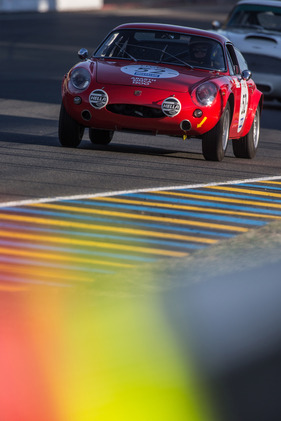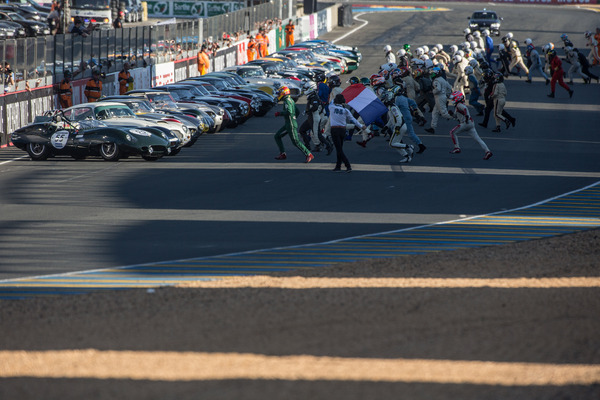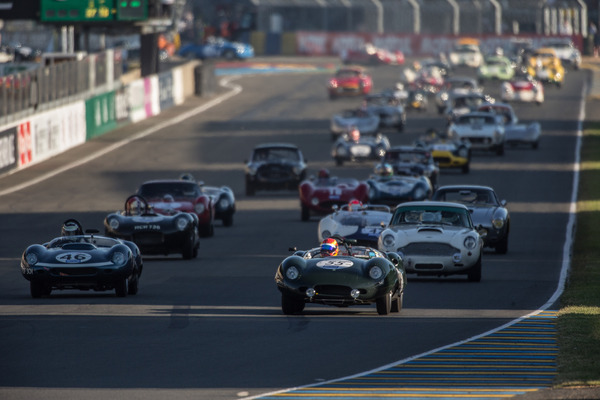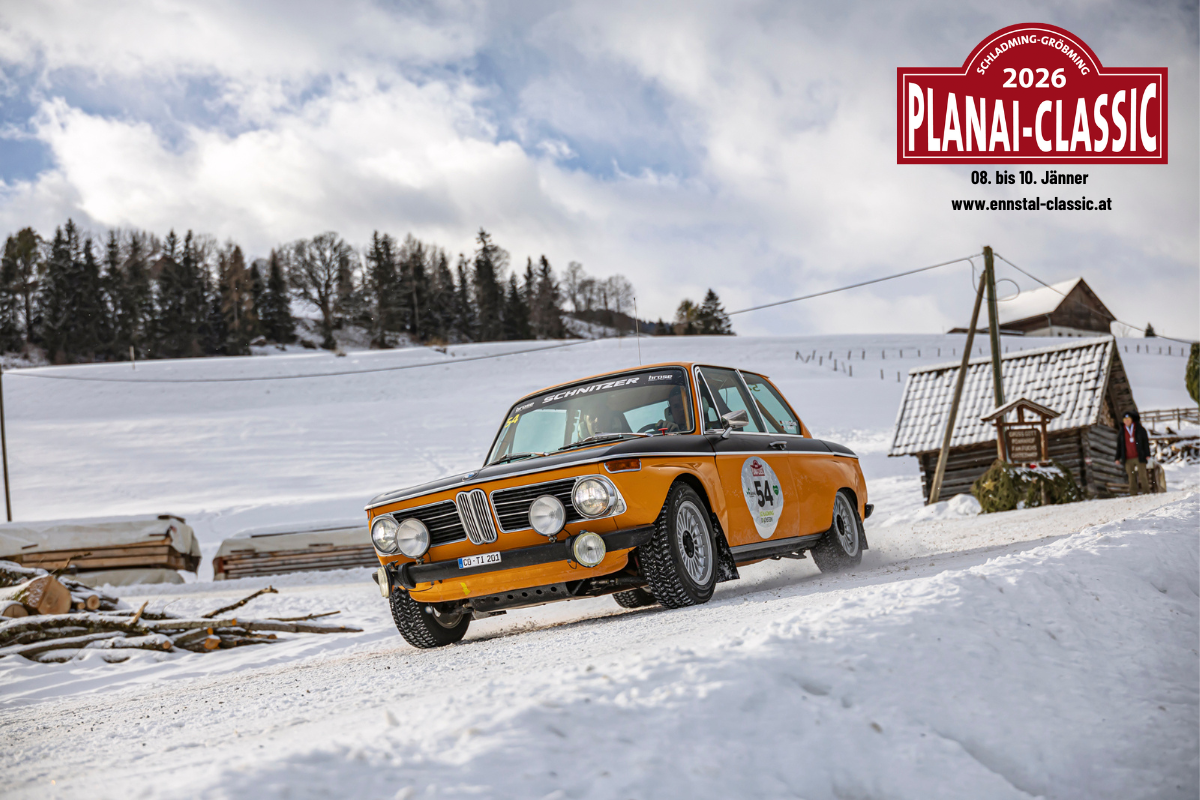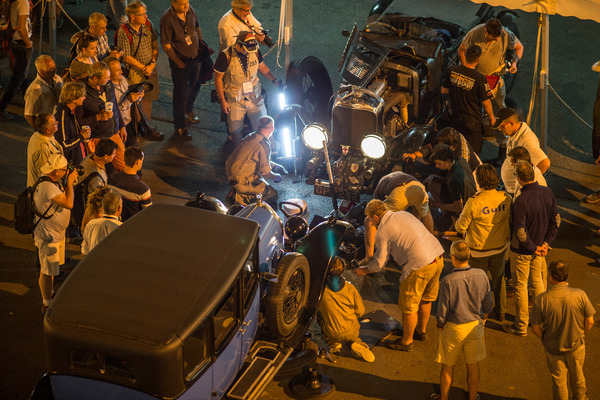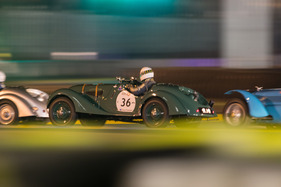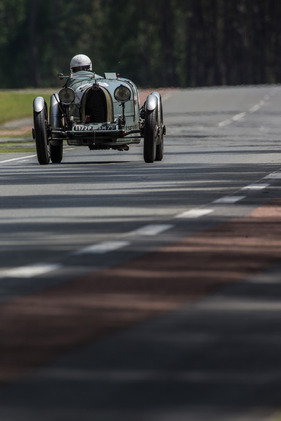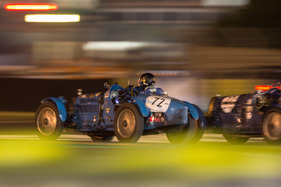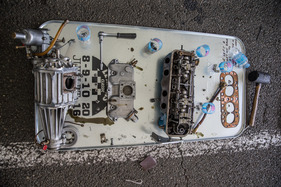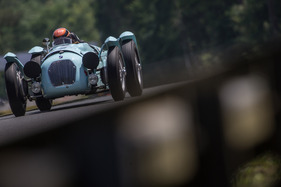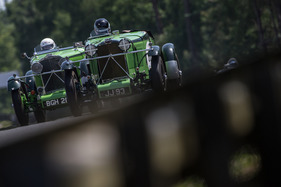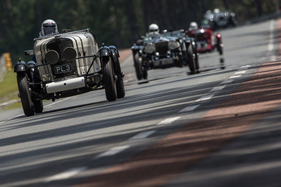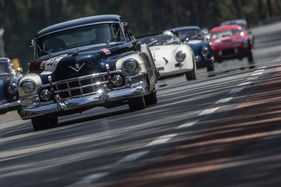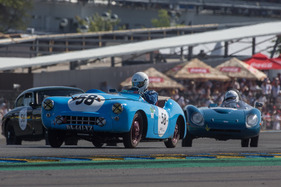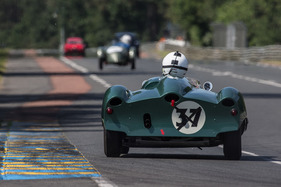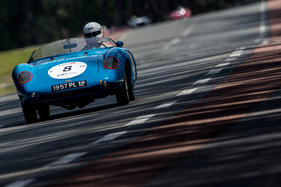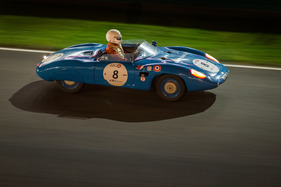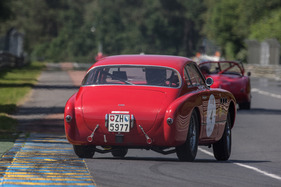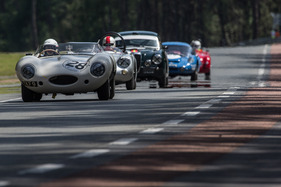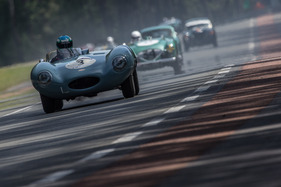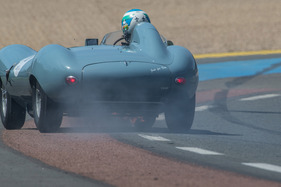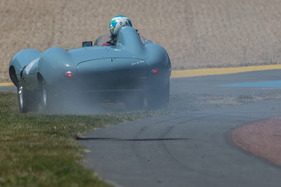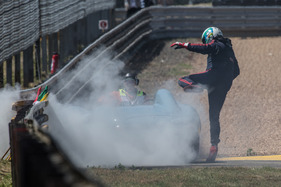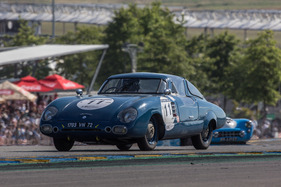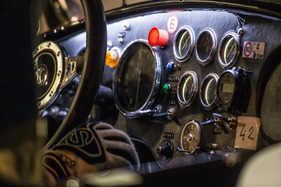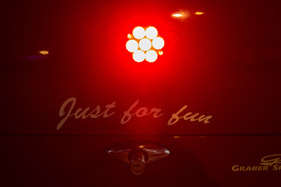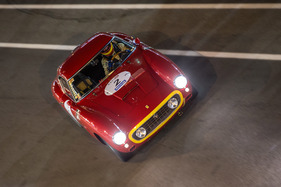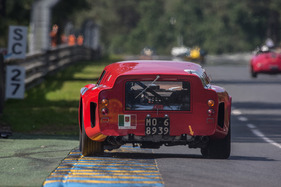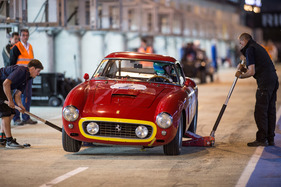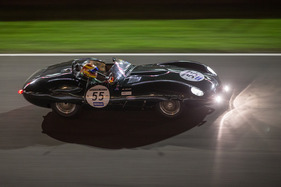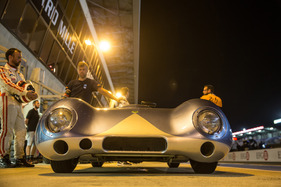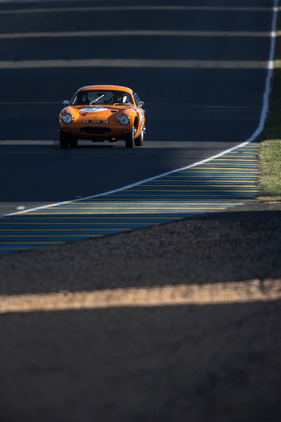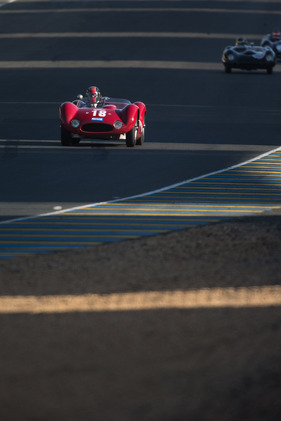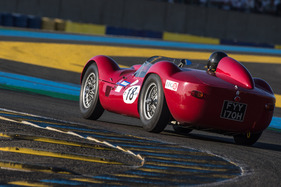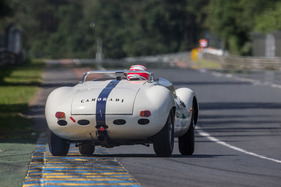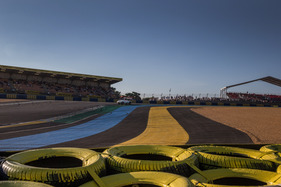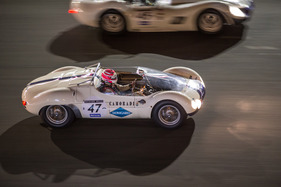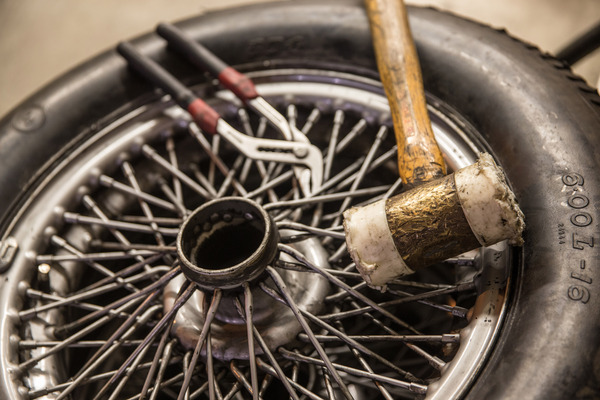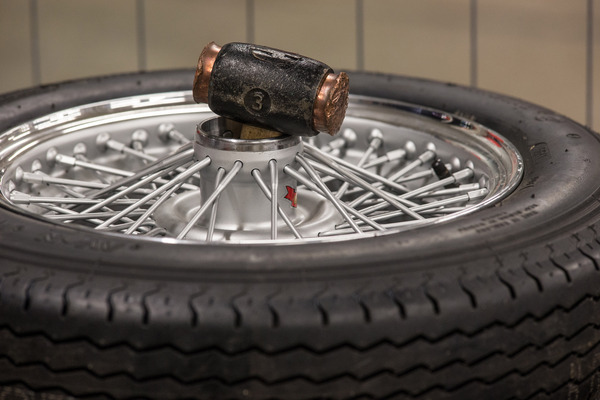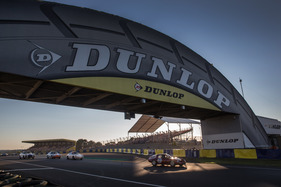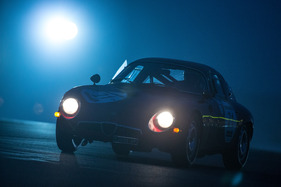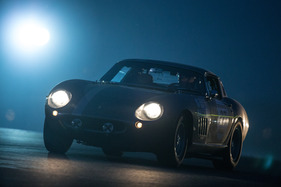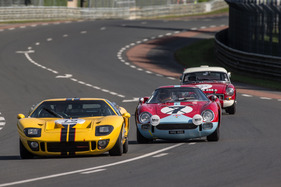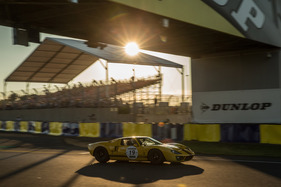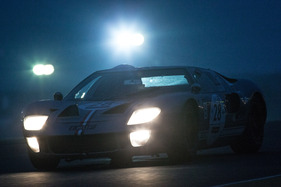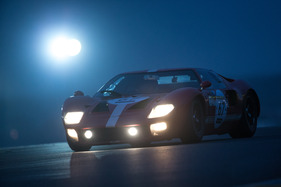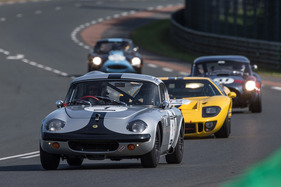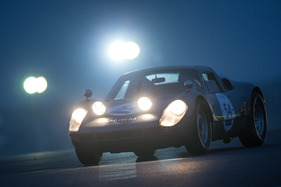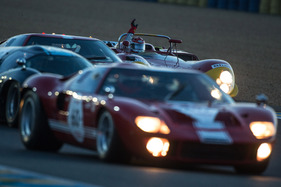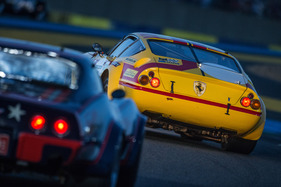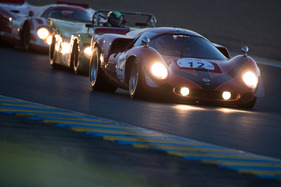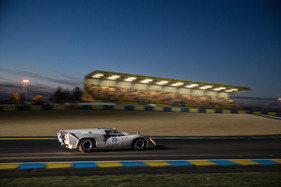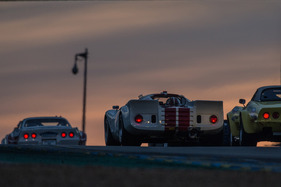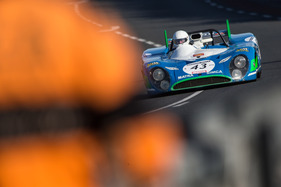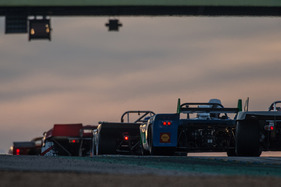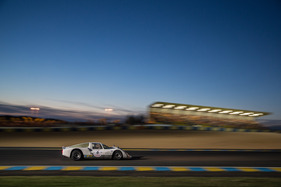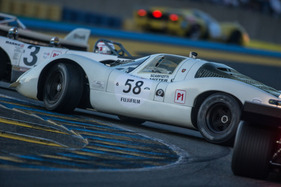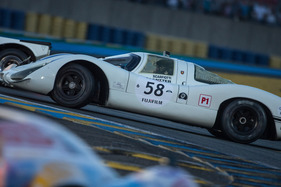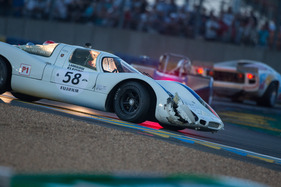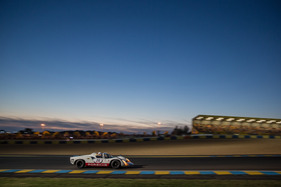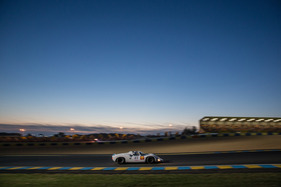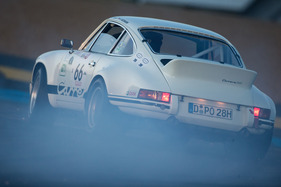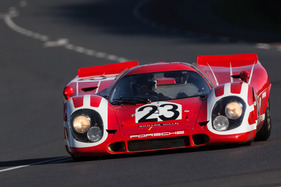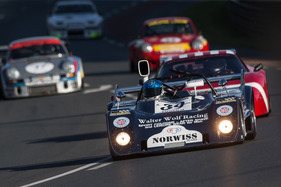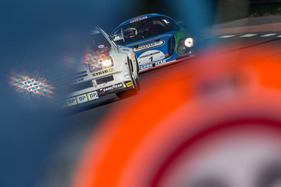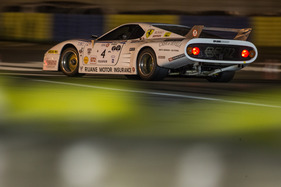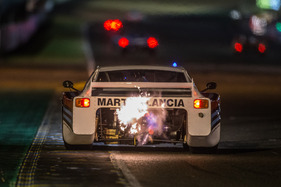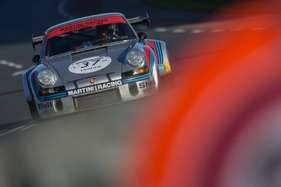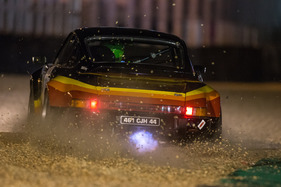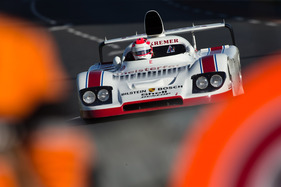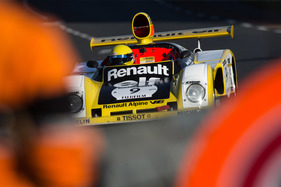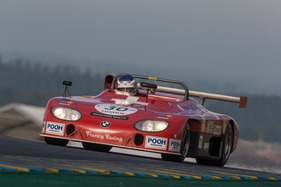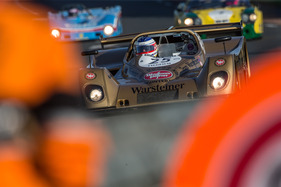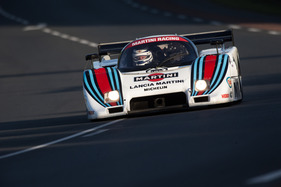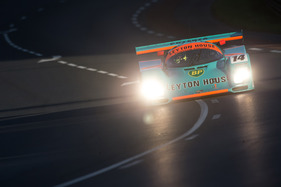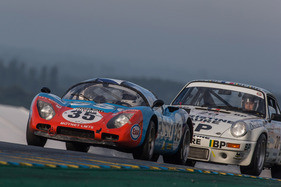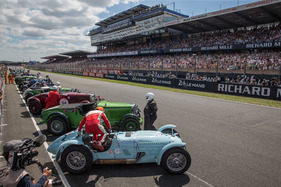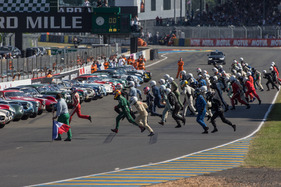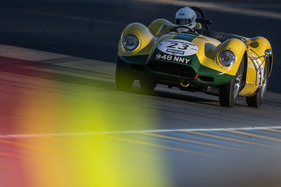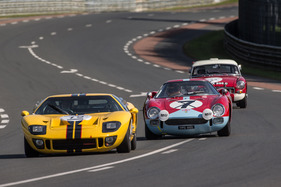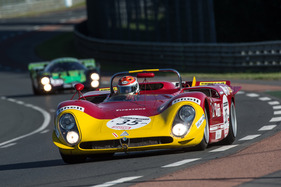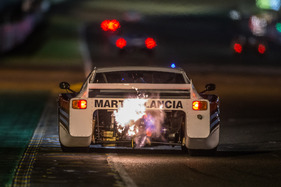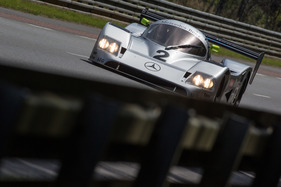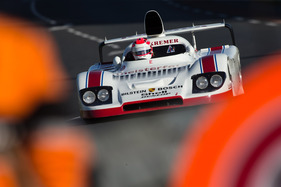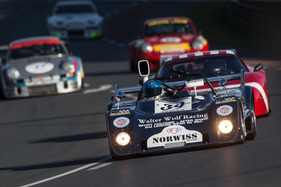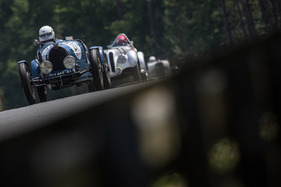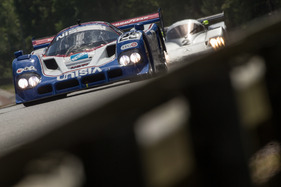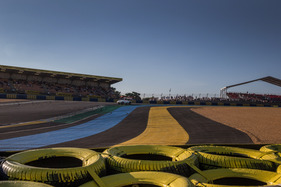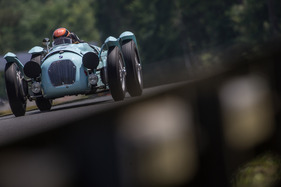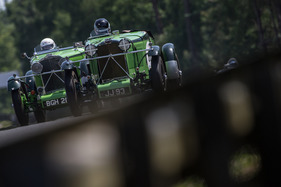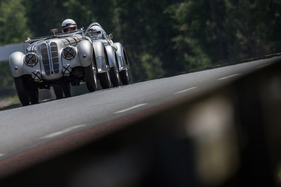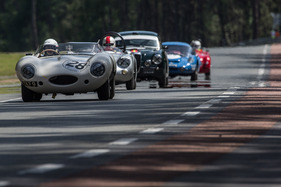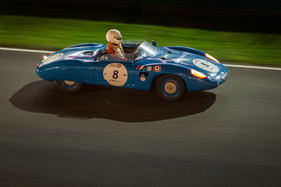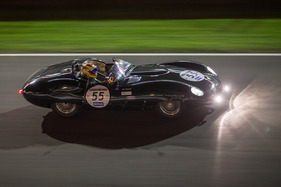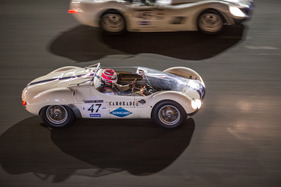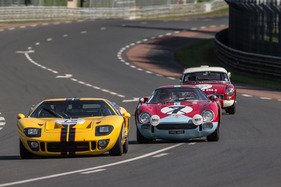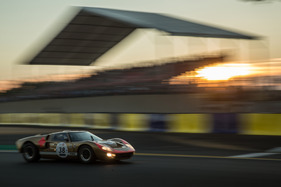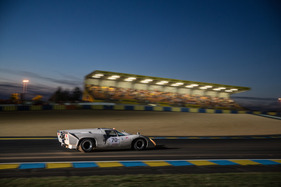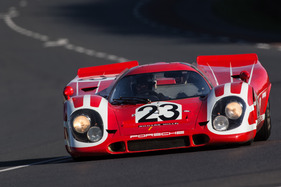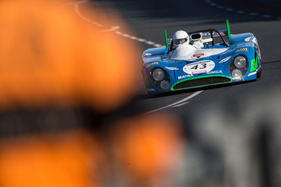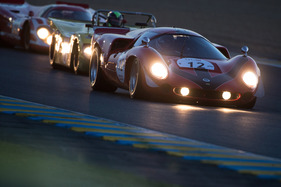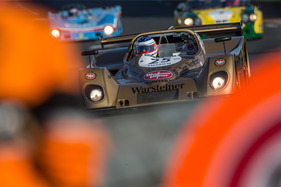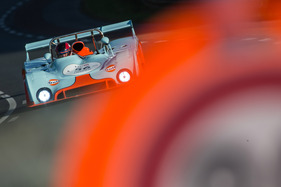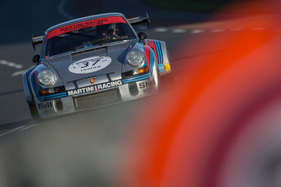The eighth Le Mans Classic since its premiere in 2002 attracted a record number of spectators. And it also saw the addition of a field of more modern racing cars. The overall victory in the field of this youngest of the historic racing cars went to the German Marco Werner in a Porsche 936. The Swiss were also among the front runners. This closes the circle to the modern era, as three weeks earlier a Porsche 919 Hybrid also won with a German (Marc Lieb), a Swiss (Neel Jani) and a Frenchman (Romain Dumas).
Three historic racing events that really put the pedal to the metal should be marked in red in the calendar, and not just for classic racing enthusiasts. While the Goodwood Revival Meeting takes place every year in September, the Monaco Grand Prix Historique and the Le Mans Classic only take place every two years. All three combine unique vehicles that are driven at high speed on race tracks steeped in history. Monaco and Le Mans are also not permanent race tracks, apart from the part of the circuit integrated into the Circuit Bugatti from the start/finish to after the Dunlopbogen.
"I just want to drive at Le Mans"
Anyone who can take in all three events on site has really seen the best of the best in Europe. And because this magic attracts so many drivers and spectators, all three events have developed into money-making machines for their organizers.
Do the math: Each spectator spends around 50 euros on a ticket for the Le Mans Classic. Last weekend there were 123,000 (a record) over three sunny days.
A starting place costs 6200 euros per team, which amounts to well over 3 million euros in entry fees alone for the 550 (!) participating cars. 100-octane fuel must be purchased from the pump in the pit lane for 4 euros per liter.
"Le Mans is Le Mans, I just want to drive here. There are few people in this world who get this opportunity. Anyone can drive at Hockenheim and Dijon. That's why I'd rather do without something else," says Swiss Beat Eggimann, for example, who drove a two-liter Cheetah sports car in field 6 - without a partner as a replacement and to share the costs.
Racing cars from different eras in the wild
The majority of the participants don't care about such numbers anyway, and thankfully, nowhere else can you see so many racing cars or models of the same type from the history of the 24 Hours of Le Mans in one place in the wild.
The organizers have not made any major changes to their selection and classification. Field (French: Plateau) 1 brings together the pre-war cars, field 2 those from 1949 to 1956, field 3 from 1957 to 1961, field 4 from 1962 to 1965, field 5 from 1966 to 1971 and field 6 from 1972 to 1981.
Each field practices once during the day on Friday and once in the dark, with qualifying for the younger and best-lit cars extending deep into the night on Saturday. On the other hand, the oldest cars are first in line on Saturday from 4 pm.
Fast Group C
Before the usual six "Plateaux", two mini endurance races with a strong field of cars got the spectators in the mood. In the field of 60 classic Jaguars, most of which came from the island, the 1962 E-type driven by Briton Julian Thomas was clearly the fastest car. And a sensational field of 35 sports cars from the legendary Group C was not only reminiscent of the 1980s, but also of last June's 24-hour race. Japanese driver Katsu Kubota literally flew away from his opponents in a Nissan R90 CK, which was as fast on the straights as the modern hybrid prototypes of three weeks ago (340 km/h).
However, like this year's Toyota TS050 Hybrid, which led for a long time, it stopped on the penultimate lap - Japanese cars just don't seem to be able to win at Le Mans.
Frenchman Julien Piguet took the win in a Spice SE89C ahead of an identical model from England and a Porsche 962 C. Only 21 cars crossed the finish line at the end of the 45 minutes - a failure rate that was typical of the time.
Typical Le Mans start for the grandstands
The start of the first race of fields 1, 2 and 3 takes place in typical Le Mans style, with the race cars lined up on the starting straight along the pit wall at a 90-degree angle and, after the drivers have sprinted into the cockpit from the opposite side of the road, the cars are set in motion.
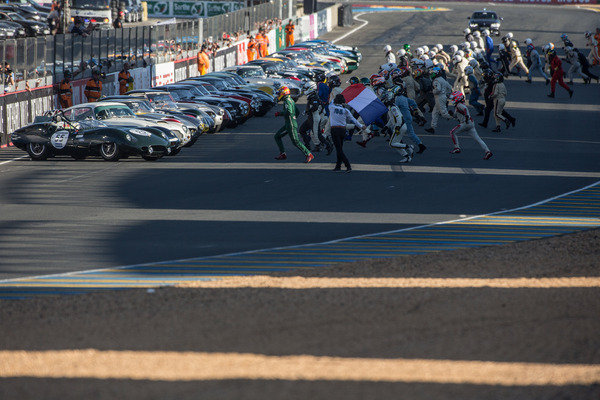
However, this is only a "show act" for the introductory lap, as the actual races of the Le Mans Classic are also started on the fly for safety reasons, as has been the practice since 1971.
Three races at different times of day
Each field takes part in three races, in which the leader is waved off after 43 minutes. The starting grid for the first race is determined by the best times from the two qualifying sessions, then by the fastest lap times in the previous race.
The result is calculated by adding up the three races, so that the Le Mans Classic comes close to the character of an endurance race without pushing man and machine to the limit as in modern races. The fact that this was nevertheless the case this year was due to the midsummer temperatures and a balmy night, which did not really help to cool down the cockpits and also put a strain on the mechanics.
Swiss victory in the first race
Some of the many German-speaking participants put on a great show, with the Swiss Christian Traber being the first to do so. His Talbot Lago ex-Monoplace décalée - one of only two 1939 racing cars converted into a two-seater sports car - can hardly be beaten in any race with pre-war cars with the Bernese garage owner at the wheel if the technology plays along.
Because the original 4.5-liter six-cylinder engine often threatened to overheat in Traber's previous races, the Graber sports garage in Toffen (owned by the Traber family) took precautions by installing a new hand-made water cooler. Nevertheless, after winning the first race, the cylinder head gasket, which was also newly manufactured, had to be replaced in the eight hours leading up to the second race at night.
The work paid off, as the young American Spencer Trenery, who completed the night stint alone (Traber had driven the BMW M1 immediately before), once again brought the light blue Talbot to the finish line in first place despite a time penalty of 45 seconds (pit stop too short).
The third race on Sunday morning also ended in favor of Traber/Trenery. In contrast to 2012 and 2014, the Talbot 105 of Michael Birch and Gareth Burnett was unable to stand up to its victorious brand colleagues this time. Apparently, the Brits did not have the fastest car from their team at the start this time. More than three minutes behind, the 2014 winners finished in second place this time.
The armada of nine BMW 328s in this field was impressive, representing their jubilant brand (100 years) in a way that was not only quantitatively worthy.
In the first race, the German duo Albert Otten/Diethelm Horbach drove from 43rd on the grid to third place behind the two Talbot cars mentioned above. In the night race, however, they were too far behind to successfully defend this position despite another good fourth place on Sunday morning. In the end, it was only enough for P9. The Frenchmen Jean-Jacques Bally and Bertrand Leseur were more regular with their Munich sports car, which they piloted to third place in the overall classification of the pre-war cars with 5th, 5th and 3rd places.
The Germans also finished third in the index classification, which, as in previous editions of the 24 Hours of Le Mans, takes into account the engine capacity, performance and efficiency of the individual cars, behind an MG Magnette K3 and Morgan 4/4 TT Replica. With Heinz Stamm (CH) and Peter Dubsky (A) in an Aston Martin 2-Litre Speed from 1937 (7th) and Wilfried Schäfer/Florian Brandt (D) in a Talbot AV 105 Alpine (1934), two other German-speaking teams made it into the top ten of the scratch classification.
Jaguar show in the second field
Three British drivers in historic Jaguars set the pace in the oldest racing cars of the post-war era. Andy Wallace drove the D-type just as fast as Mike Hawthorn/Ivor Bueb did on their way to overall victory in 1955. Chris Ward drove the three years older C-type, which Juan Manuel Fangio had once bought for races in South America but never used. This JD Classics car was on display at the Bernina Gran Turismo last year with Ward at the wheel, and the Silverstone racing instructor also ensured the 25th victory in the 28th race for this vehicle at the Monaco Historique last May. Jim Clark once showed off his driving skills in the D-type of Carlos Monteverde and Gary Pearson. However, this big cat no longer played a major role in the races.
Chris Ward's dream of victory at Le Mans was shattered after one lap on Saturday, while Wallace won with a large lead over Nicolas Chambon in the Maserati 300 S and Geneva's "Seiss" alias Serge Kriknoff in the small Lotus XI 1500 in Swiss national colors.
In the night race, Ward then narrowly won the duel with Wallace, with Chambon and Kriknoff again following at a respectful distance. In the final race, Wallace returned the favor with a clear victory ahead of Ward, so that the Briton was able to celebrate as the overall winner, just like in 1988 after his triumph in Tom Walkinshaw's Jaguar team.
More than seven minutes behind, Chambon in the Maserati finished second and Kriknoff in the small Lotus a further one and a half minutes back in third. Britain's John Clark, in fourth place in a Cooper T39, lived up to his namesake on the leaderboard, and because they were the last team to complete the same number of laps (22) as the overall winners, Monteverde/Pearson finished in fifth place despite being almost 28 minutes behind. Johannes Huber (A) and Guido Haarmann (D) brought their Mercedes 300 SL over the distance in eighth place. After a good tenth place in the first race, Diego Meier (CH) had to retire with gearbox damage to his rare 1952 Ferrari 225 S.
Panhard brings back memories of a dangerous time
The excellent 25th place finish (out of 70 cars that started) of Frenchman Pierre-Henri Mahul in the DB HBR Barquette from 1957 is worth mentioning. Only at the Le Mans Classic can these rattling two-cylinder engines with 750 or 850 cubic meters be seen and heard in such large numbers and in various versions from DB and Panhard. Even though the fastest of them reached speeds of over 200 km/h after the long run-up on the still chicane-free Hundaudières straight thanks to their wind-slippery nature, it is hard to imagine such speed differences in modern races.
As the Le Mans Classic is driven with consideration, this does not pose a major safety risk here. Incidentally, Mahul completed his fastest lap with an average speed of 127.8 km/h. Nevertheless, he only finished in 10th place in the index rankings, which were led by three Porsche 356 Pre A cars that were just as unique in terms of appearance and sound.
Superior Chris Ward in the Lister Costin in field 3
In their day, drivers with Brian Lister designs never saw the chequered flag at the 24 Hours of Le Mans. Chris Ward made up for this by bringing his Jaguar-powered Lister Costin home first in all three races in Field 3.
Frenchmen Eric Perou and Luc Cheminot finished second after completing 24 laps in three races, almost eleven minutes behind, while soloist Christian Dumolin from Belgium finished third in the Ferrari 250 GT Berlinetta.
Initially, Marco Werner was also well on his way there. After leading for a long time, he was only beaten by six tenths of a second in the first race in the Maserati T63 Birdcage. This car from Ulrich Schumacher's collection is one of only two mid-engine designs of this type, which the German, who has lived in Thurgau for 15 years, drove skillfully despite his lack of driving experience.
Unfortunately, he was not seen in action with this car afterwards, Werner then used his strength for the Porsche 936 in field 6.
With finishes in all three races, which they finished in 41st, 39th and 40th place, Patrick Morgenstern, Tobias Klaes and Christian Loch were the best German team in their Porsche 356 A in 30th position, ten places better than the average of all placings, which was due to the retirements of many of the faster participants in various races.
Ford show in field 4
In 1966, Ford took the first of four consecutive victories at Le Mans with the Anti-Ferrari aka GT40. 50 years later, it was a little less difficult to prevail in Field 4 of the racing sports cars from 1962 to 1965 as in previous editions of the Le Mans Classic. This time, it was ten GT40s against 12 Shelby Cobra 289s.
But even in terms of basic speed, the flat Fords were superior to the beefier Cobras. Of the five fastest GT40s overall in qualifying, only the two flounders of Shaun Lynn (two race wins) and Richard Meins (three runner-up finishes) came out on top in the end. As in other historic races, Frenchman Ludovic Caron was able to break the Ford phalanx with his Shelby Cobra 289.
Claude Nahum from Geneva achieved a brilliant fifth place overall, this time without any help from semi-professional Bernard Thuner. Ronnie Bucknum and Dick Hutcherson finished third overall in the MkII (GT40P/1016) entered 50 years ago. Nahum's colleague from western Switzerland, Charles Firmenich, also completed 26 laps like the front runners - more than in any other field - and was the fourth-best Cobra tamer overall in eighth place. "Best of the Rest" was Thomas Studer with his Shelby Mustang 350GT in tenth place ahead of the best Jaguar E-type of Alexander Rittweger and Sam Hancock as well as the first Lotus Elan (Type 26R) of Tromans/Meaden. Four of the small Elans took the top places in the index rankings. With a 13th place in the first race and ninth in the third, Richard Meier/Remo Lips also put in a great performance in the second Mustang from Switzerland. Unfortunately, a broken half-shaft in the night race prevented a better classification (16th).
Photo finish in the battle for victory in the Lola T70 in field 5
Like the Ford GT40s before them, the Lola T70s dominated Field 5. In the real 24 Hours of Le Mans, the British cars with their Ford V8 engines were never as impressive as in the classic version. The two fastest cars made for a heart-stopping finale in the battle for overall victory at the 2016 Le Mans Classic.
In the first race, Bernard Thuner in a 1968 Mk3 was able to quickly snatch the lead from pole setter Eric de Doncker in a 1969 Mk3B and extend it. However, an accident followed by the first safety car phase wiped out the Geneva-based driver's lead. Ultimately, the race ended under yellow after a second accident and only four laps completed, with De Doncker finishing 1.235 seconds ahead of Thuner.
Behind them, the Porsche 917 of Gary Pearson (the well-known number 23 double from David Piper's collection), the Matra MS660-01 of Frenchmen Richard Mille (also one of the main sponsors of this event and other events of the Peter agency from Paris) and Yvan Mahé and the third-best Lola Coupé of Toni Seiler crossed the finish line. Due to engine failures, the 917 did not make it through the other two races, and the Matra also fell by the wayside.
Eric de Doncker again won the second race early on Sunday morning, this time with a lead of 8.7 seconds. While Thuner had bad luck with the chaotic safety car phases in the first race, he was now lucky to be there at all. According to Thuner, the leading Lola suddenly lost some cooling water, on which the Genevan spun into the gravel, but was quickly able to extricate himself.
As a result, the Belgian went into the final with a lead of almost ten seconds, which he was able to tackle from row 1 ahead of the Swiss thanks to his better lap time in race 2 alongside pole setter Jacques Nicolet in the Duckhams DFV. However, the Frenchman retired immediately after the start, and Emmanuel Collard's Porsche 908/3, which had started in a flash, also soon dropped back. The two red T70s took command again. The race seemed to be over until De Doncker, in his own words, suffered a slow puncture on the penultimate lap. Thuner passed him and was then also the quicker to lap.
But nobody knew who the overall winner was until the result lists came out. This revealed a lead of 10 thousandths of a second in favor of the 55-year-old from western Switzerland! His third victory at the Le Mans Classic with the same car after 2010 and 2012 and second place in 2014. Toni Seiler was also unaware of his good fortune that he was allowed on the podium in third place thanks to his consistency (5-5-3), and so his team first had to look for him and ask him to run to the podium ceremony. His joy at his biggest success to date after winning the Spa Classic 2015 was all the greater.
The 1971 Chevron B19 of the Italians Bianco/Mazzoleni came fourth overall, ahead of two other Lola T70s. A feast for the eyes and ears in this field was the Ferrari 312P of Arnold Meier, driven as usual brilliantly by the experienced Englishman David Franklin. Unfortunately, a loose gearbox linkage forced him to retire early in the second race, but he returned for the third race. Due to a retirement on the last lap, Peter Vögele (21st) in his 1969 Porsche 917 did not quite make it the full distance. In 14th place, Afshin Fatemi was the best-placed GT driver in the field in his Porsche 911 RS 3.0.
Back on the podium at Le Mans (field 6)
Yves Scemama was the third Swiss driver after Christian Traber and Bernard Thuner to take pole position in field 6 of the youngest racing sports cars. In the first race shortly before midnight, the driver from Neuchâtel was first to take the chequered flag. However, a subsequent time penalty of 45 seconds threw him back behind Marco Werner in the Porsche 936, after which the TOJ SC304 with DFV engine apparently stopped in the paddock with gearbox problems. It remains to be seen whether Scemama would have been able to keep up with the brilliantly prepared Audi works driver.
Werner also won the second and third races and thus the overall standings. While this Porsche Kremer Racing car, once driven by Stefan Bellof and Rolf Stommelen in the DRM, had never been to Le Mans, the 936 works car of Ickx/Bell won here in 1981.
Marco Werner also knows the Le Mans podium very well as a three-time overall winner with Audi, but he would never have expected to climb to the top again. "I started here without any ambitions. My ambition was there, but it's not easy to drive so fast here in such a historic and valuable car. That's why I had a lot of respect for this task and pushed myself to a healthy limit here. I also have to thank the team, who did everything they could to ensure that we made it to the end, which was not certain after clutch and gearshift problems during the night."
Chris MacAllister would have been the main contender for the top spot in his Gulf-Mirage M6 after Scemama's absence. After finishing third and second, the American retired from the final race after the start.
Roald Goethe and Stuart Hall also had to retire their DFV-powered Mirage early. Dominique Guenat was well on his way to second place with his Lola T286-DFV, but lost too much time in the final and finished third. Ahead of him was another Swiss driver, Marc de Siebenthal, who took over from Stephan Meyers in the Porsche 935 and was the best representative from the former Group 5 with the car once driven by Manfred Schurti from Liechtenstein in the Gelo Racing Team.
The fastest of all GT and GTP cars at Le Mans was the brute Chevrolet Monza of Frenchman Gilles Ceron. However, it was only able to exploit the 650 hp from the 5.8 L V8 small block in practice and in the early stages of Race 1 before a leaking fuel line paralyzed it. Philippe Scemama completed the overall strong Swiss result as fourth overall and class winner in the Sauber C5-BMW. Remo Lips and Arnold Meier in the Ferrari 512 BB LM in ninth place and Christian Traber with Peter Muelder (D) in 13th place in the BMW M1 Procar also contributed to this result. Between them, Alexander Rittberger and Sam Hancock in another Ferrari 512 BB LM finished tenth and the German duo Uwe Alzen/Michael Roock in the Porsche 911 Carrera RSR 3.0 eleventh.
And what did the aforementioned Beat Eggimann do? He drove and drove and drove and was rewarded for his consistency with 16th place overall in field 6. Which should have made it worthwhile to give up other nice things during the year.

